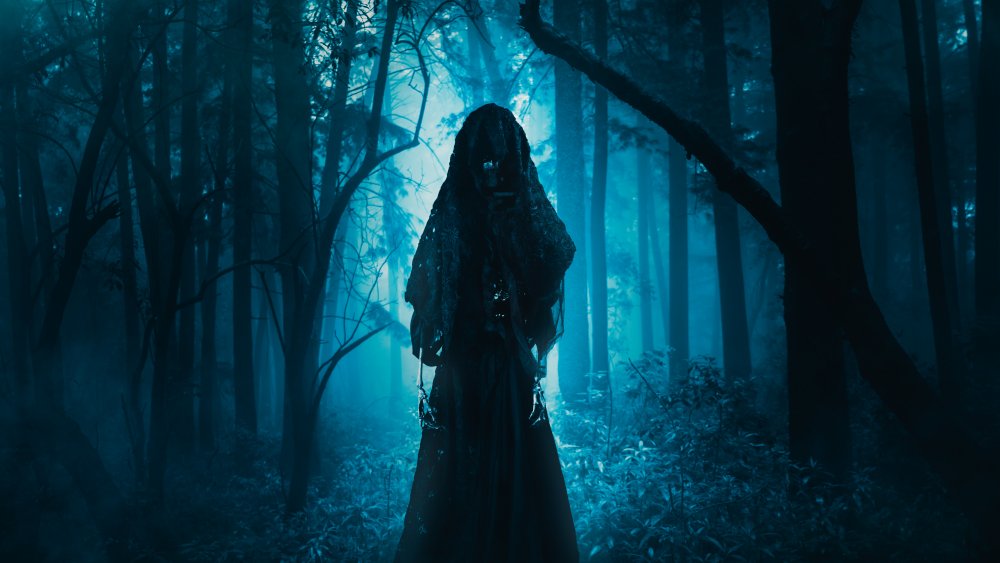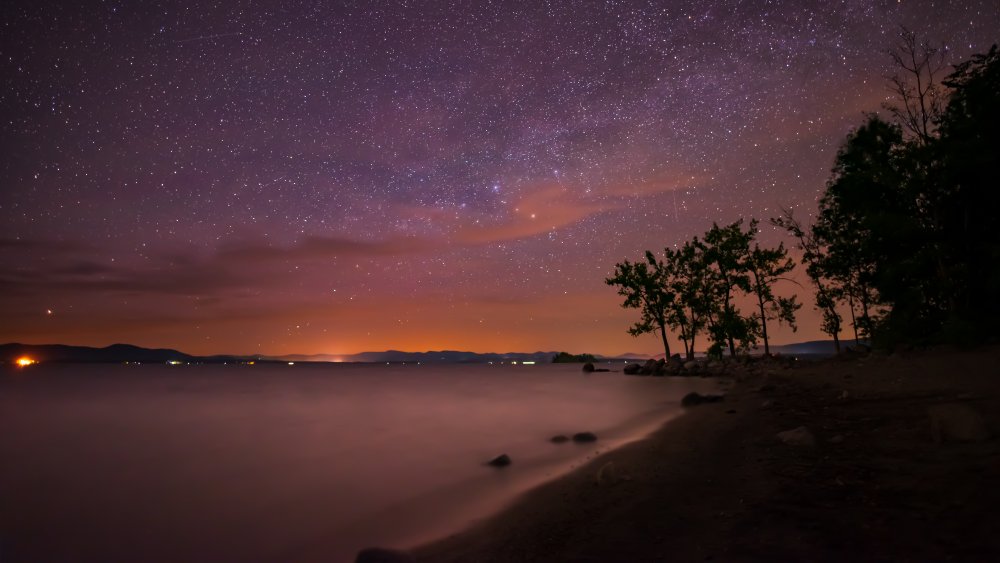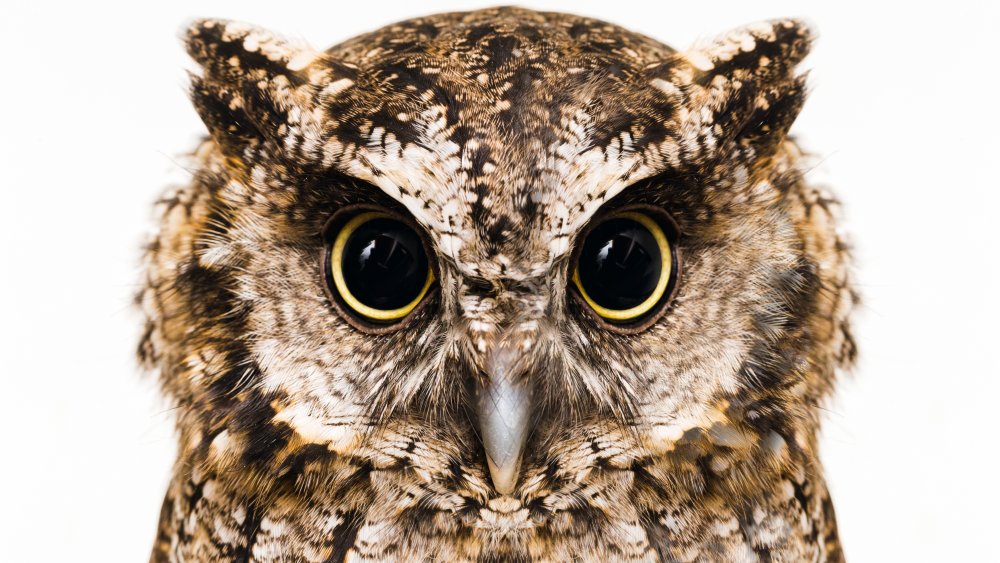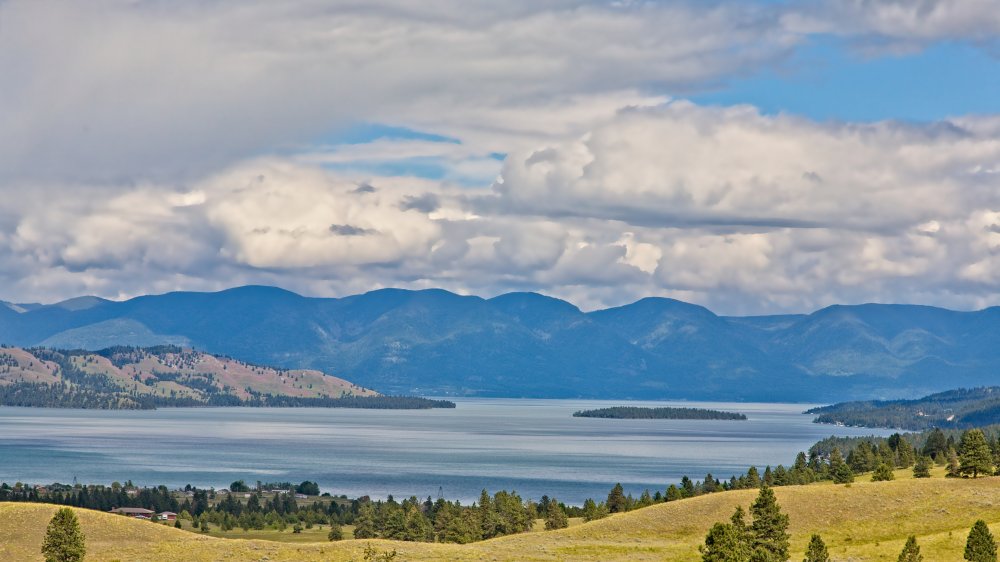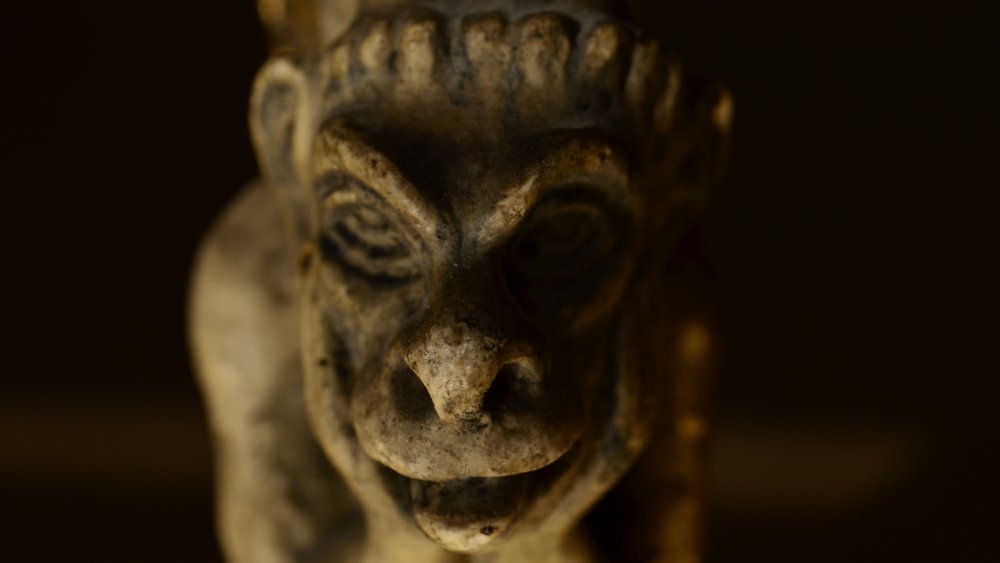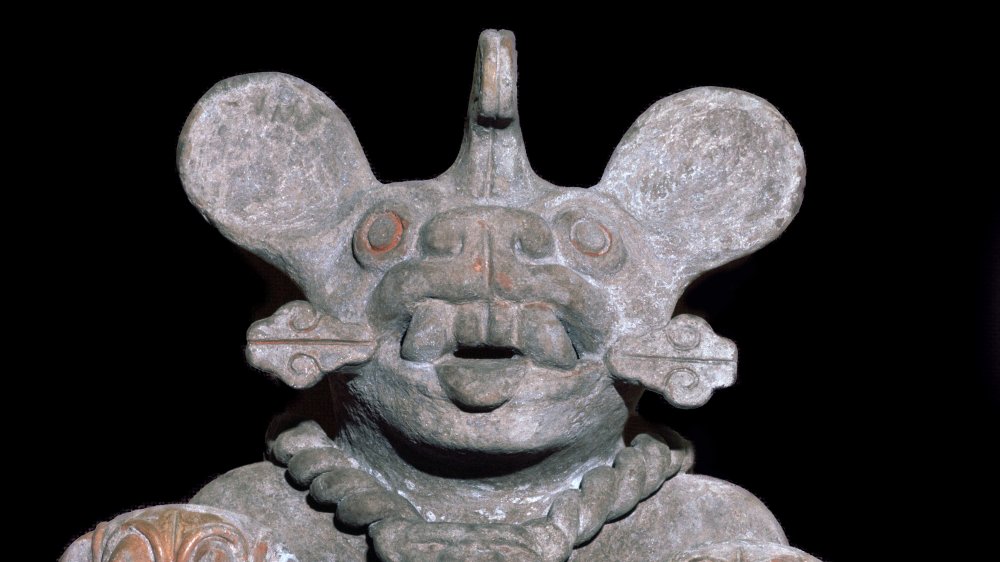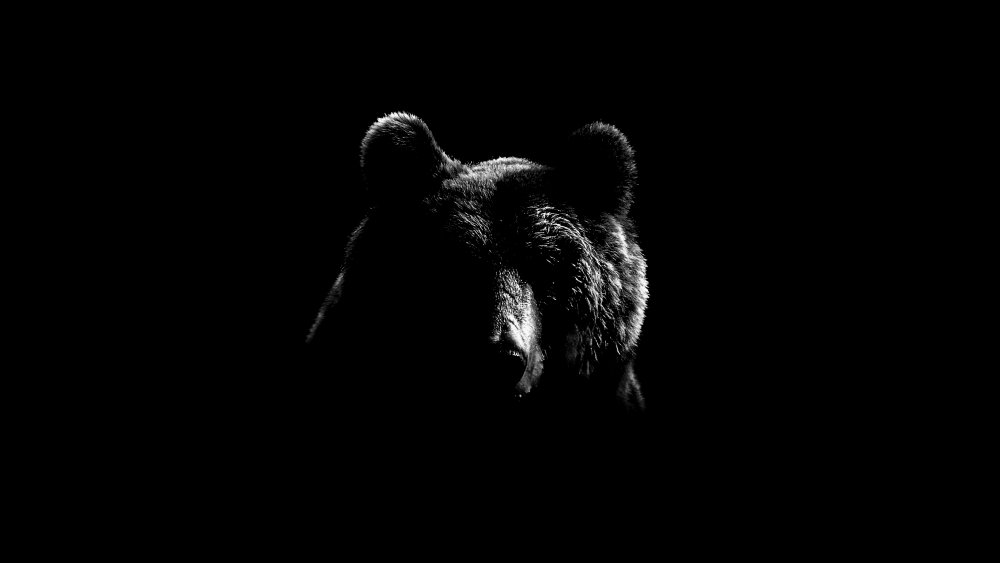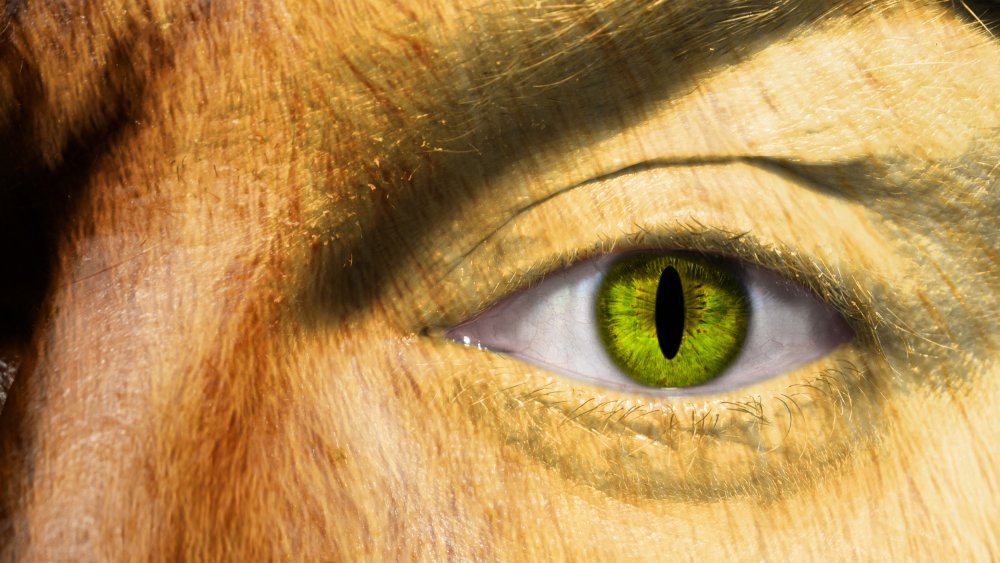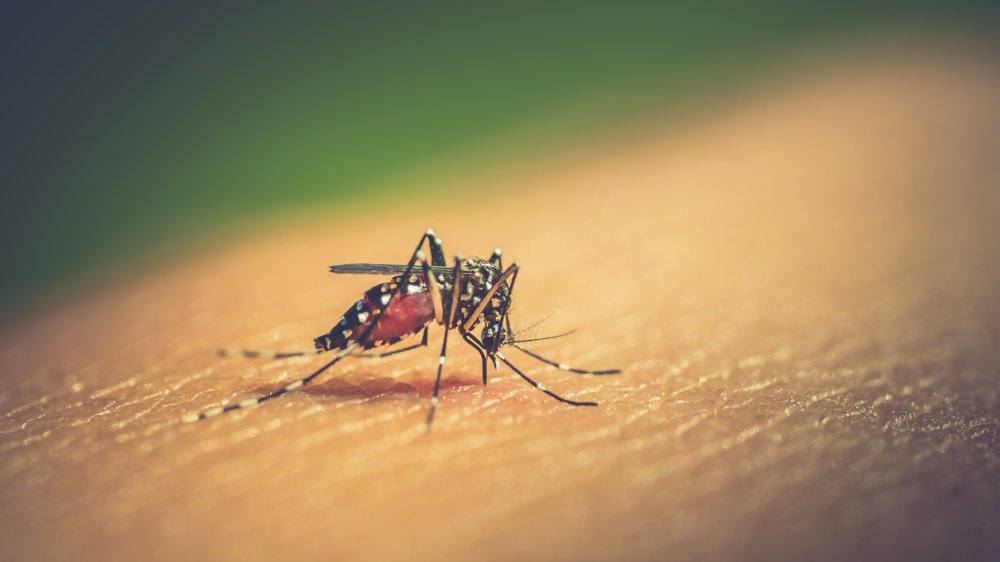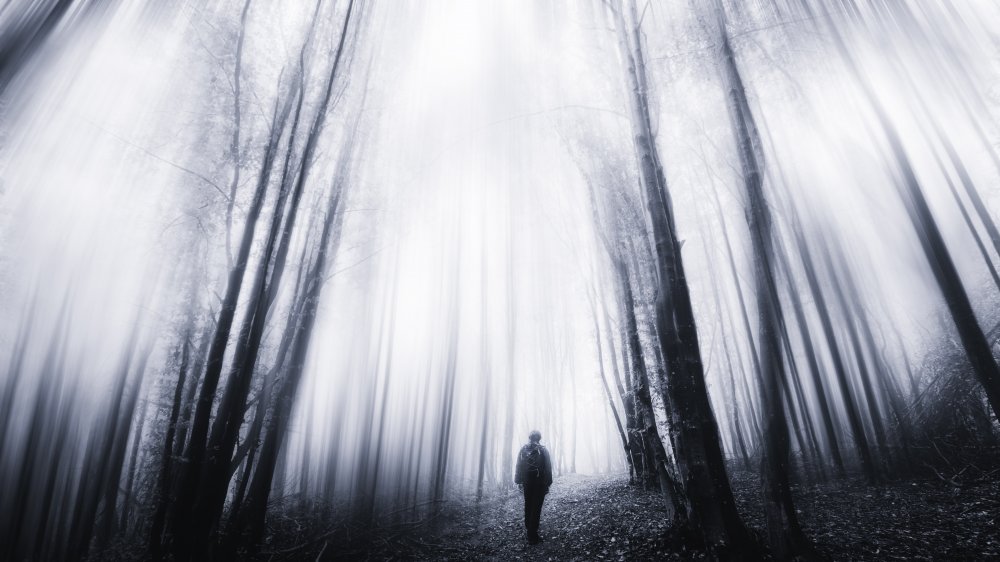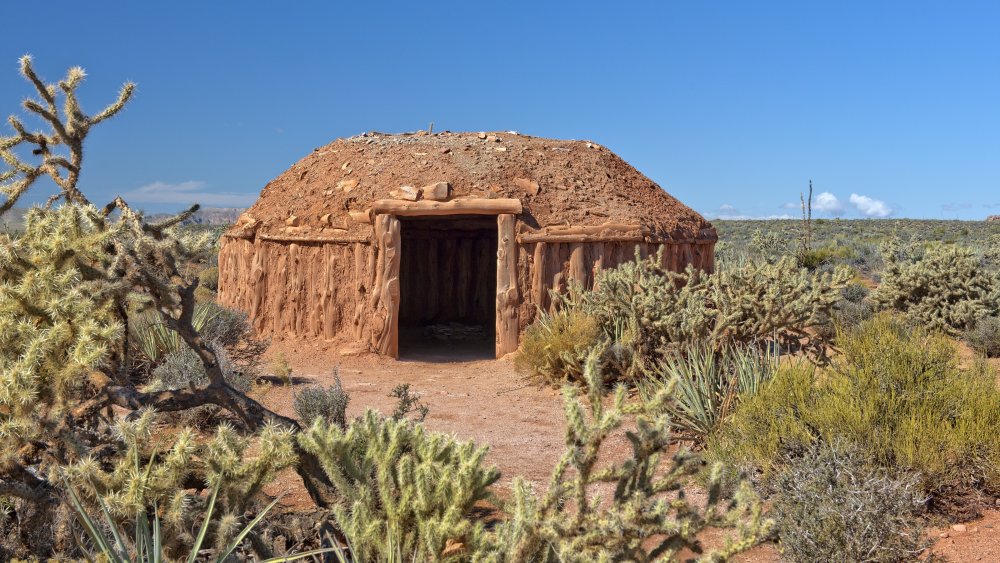The Creepiest Native American Legendary Creatures
The native peoples of North America have suffered a lot over the last several centuries. Forced out of their own lands by European colonists and treated extremely poorly (to put it mildly), Native Americans have still managed to keep their ways of life preserved through folklore passed down through the generations.
Much of this folklore is unknown by North Americans at large, which is a shame for many, many reasons, including the fact that these stories are really great. And, like most cultures around the world, the Native Americans had some super creepy fables to get children to behave and warn people away from cultural taboos.
While you may have heard plenty of creepy legends from all of the various other cultures of the world, chances are you're not too familiar with the ones shared by the Native American peoples throughout history. Get ready to be creeped out by these weird stories.
The Floating Head of Vengeance
While many think of the Iroquois as a single tribe, it's actually a grouping of several. These tribes united so long ago that historians aren't even completely sure when the alliance started. Together, they made up a good chunk of the northeastern United States. Since they had a shared language, they also shared a lot of their culture among one another.
One particular Iroquois legend is especially creepy. In what's now known as New York, there's a lake called Sacandaga (pictured). Long ago, a tribe lived on the banks of this lake, according to The American Library of Art, Literature, and Song. So long ago, in fact, that the name of the tribe has been lost, even to the Iroquois. After a particularly harsh winter and famine, the young men of the tribe thought it best to leave the area and look for better fortunes elsewhere. The elder tribesmen disagreed, saying the famine was a punishment from the Master of Life, and the solution was to stay put, as the curse would follow them if they left.
The younger tribe members were unhappy with this and murdered their elders, decapitating them, and throwing their heads into Sacandaga Lake. These heads, in their outrage, merged into one giant head covered in black hair with wings and talons. It killed the young men and then went on to kill the rest of the unnamed tribe, to boot.
The owls are not what they seem
The indigenous tribes of the area that is currently the southern U.S. border have a spooky legend of a creature called La Lechuza. These massive owl-human hybrids with the face of an old woman are said to actually be witches who managed to transform themselves, according to Mexico Unexplained. They loved to eat humans, especially children, who were said to be particularly flavorful. Considering how dirty kids can get, this says a lot about what La Lechuza finds tasty.
What's remarkable about La Lechuza is how widespread the legend is. The tribes of northern Mexico were fairly isolated from one another, and yet they each have their own story of these creepy owl-witches. Stranger still, the Yakama tribe of far-away Washington state have a very similar legend of a creature called the Tah-tah-kle'-ah, also an owl-woman who likes to eat children.
Finally, there's the stikini of the Seminole tribe from present-day Florida. These creatures were more like were-owls and could change back and forth by vomiting up their own souls, which is a fairly terrifying undertaking in and of itself. So why do native tribes so far apart have similar stories about scary owl-people? The owl is also an omen of danger or death in many tribes. We're not saying that there definitely is some owl-monster preying on humans for centuries, but maybe check your lock when you go to bed tonight.
Indigenous America's Loch Ness Monster
Not far from Missoula, Montana lies Flathead Lake (pictured). While it's generally peaceful and beautiful, legends say there is a terrible creature living there — the Flathead Lake Monster. Similarly to Scotland's Loch Ness Monster, this creature is extremely elusive. Unlike Nessie, however, the Flathead Lake Monster is a giant eel or water snake, according to Indian Legends from the Northern Rockies.
Another key difference? Nessie doesn't really bother humans, while The Flathead Lake Monster is said to have killed half of the Kutenai tribe that discovered it. One cold day, two girls spotted antlers in the frozen lake. They decided to cut off the antlers and keep them, since they likely belonged to a long-frozen animal. However, they actually belonged to the lake monster, who was none too pleased and drowned half of the tribe as punishment. That seems pretty harsh, but monsters gotta monster. This legend was even used to explain why there were so few Kutenai, which was a smaller tribe compared to most.
That's not the only Native American lake creature, though. Another very popular legend that lasts until today is that of Ogopogo, or Oggy for short, living in British Columbia. Ogopogo is a kinder creature, though, and is described as "spirit of the water" by the local Westbank First Nation, according to the BBC.
The strong people
Among the tribes of the Great Plains exists a legendary race called the Teihiihan, whose name comes from the Arapaho word for "strong". That's because the Teihiihan are known to be, well, incredibly strong and have thick skin. They also happen to be bloodthirsty cannibals, known to attack, kill, and eat humans without the slightest provocation. Oh, and they were also about two to four feet tall, according to Legends of America.
The Teihiihan were sort of like goblins or gremlins to the Plains peoples, such as the Cheyenne, Crow, and Omaha tribes. They each have different names for the creatures, but the stories are similar. However, the people of this area didn't have to worry about them much. Even in the oldest legends about these creatures, it's said that they were wiped out a very long time ago by an alliance of several tribes who banded together to stop them.
Much like many other legendary creatures from Native American folklore, though, races of small humanoids exist in the stories of tribes all over the continent. Most of these aren't harmful to humans, but a few are, such as the Pukwudgie described by the Wampanoag tribe or the Chaneque of Aztec lore. Again, we're not saying that a small humanoid cannibalistic race definitely existed at some point, but like, maybe double check the door lock tonight.
Camazotz is the anti-Batman
Few creatures in nature are as misunderstood as bats. They're not aggressive toward humans unless highly provoked or afflicted with rabies, which are both true of most any animal. They don't really drink blood, minus the vampire bat, but even they don't drink human blood except in rare circumstances. Actually, a lot of what they do is eat insects and hang out all day (pun sort of intended). Bats are, at worst, pretty ignorable and, at best, pretty helpful at pest control.
That said, the ancient Mayan god, Camazotz (pictured), is not your typical bat. Half-man and half-bat, Camazotz is not a caped crusader out for justice, but a murderous deity, according to El Universal. Not only is he the god of death in Mayan folklore, he takes his work seriously and goes around causing the death firsthand. Legends of Camazotz often feature him beheading people with his wings or devouring them.
There's even a modern-day theory about why the Mayan people might have come to be wary of bats. The aforementioned vampire bat does seem to have existed in what is now Mexico during the height of the Mayan civilization, and on top of that, it seems they were larger than modern vampire bats, according to HistoricalMX. If the folklore was meant to warn people away from extra-large vampire bats, then a bloodthirsty bat god makes a lot of sense.
The stiff-legged bears
2018's Annihilation is a weird sci-fi film where a team of women investigate a mysterious anomaly. One of its creepiest moments comes in the form of a terrifying bear with patchy fur and, in the interest of not spoiling things, a very disquieting method of communication. Bears can be scary enough on their own, but with a few small changes, they quickly become nightmare fuel.
The First Nations people of eastern Canada such as the Cree had a similarly creepy legendary creature known as Katshituashku, or the stiff-legged bear, according to Native Languages. These bears were a bit larger than your typical bear but were also hairless and had oversized heads. They also had an unusual way of getting around: Their legs had no joints in them, so the stiff-legged bears hobbled around with an unusual gait, which would probably be deeply unsettling if you saw it in the wild. And, of course, it loved to eat humans.
While these monstrous bears are folklore, it is worth noting that hairless bears do exist, such as Eve, who was found in 2017 severely underweight and was unable to grow a full coat of fur, according to the Humane Society. Bears with mange, like Eve, or other illnesses can also lose some or even most of their fur. And here's the thing about these real-life hairless bears — they would look pretty dang alarming if you didn't know what you were looking at.
Don't get lost in the snow
The Inuit peoples of the Arctic, often incorrectly referred to as "Eskimos," live in one of the harshest biomes on Earth, so you would imagine they probably don't scare easily. But even the Inuit have a legendary creature that's meant to warn people of a very real danger they face: Getting lost in the snow. Death by exposure is a serious concern in the Arctic, so a bit of folklore illustrating that is definitely warranted.
Inuit folklore tells of a creature known as the Ijiraq. They look a bit like caribou, but you can't see them if you look directly at them. They only appear in your peripheral vision. These evil monsters will trick people and lead them astray, or even outright kidnap them, especially children. They can even assume a human form, but they're instantly recognizable because their eyes and mouths are sideways, according to Mythical Creatures Catalogue.
According to legend, Ijiraq were humans who got lost in the snow and became trapped between the land of the living and the land of the dead. Creepiest of all is what they do to their victims — they simply abandon them in the cold. They don't eat humans or even really hurt them. They lead them off into an isolated place and leave them to die a horrible, lonely death.
Walk a mile in someone else's skin
Cultures all over the world are chock-full of legends about people who can turn into animals and vice versa. From European werewolves to Japanese kitsune, shapeshifters are folklore that all kinds of cultures and regions tend to have. But none are quite so creepy as the skin-walkers, those unique to the Navajo people of the present-day southwestern United States.
For one thing, shapeshifters in other types of folklore may or may not be evil. Sometimes they're benevolent, and oftentimes they're simply tricksters, not really wicked, but just kind of jerks. Not so with skin-walkers, which are always described as evil, according to The Vintage News. Skin-walkers were regular human beings, but the use of bad magic transformed them into what they are. Or, in some legends, humans become skin-walkers after they murder a close relative. Regardless, they only use their powers to kill and destroy.
What's also particularly unique about skin-walkers is that outsiders don't know a whole lot about them. The Navajo are very reluctant to talk about them, and they almost never discuss them with outsiders, basically saying they're none of anyone else's concern. It seems this may be because Navajo fear that talking about skin-walkers can make them a target of the creatures, but it may also just be that some cultural things can be private and don't need to be shared with just anyone.
The indigenous undead
While tales of blood-sucking undead that come out at night to feed on humans are pretty famous in the folklore of the European colonizers the indigenous peoples of North America encountered, with such a wide variety of their own creepy legends, it makes sense that there would be a Native American vampire story as well.
The Wabanaki Confederacy of what is now the state of Maine have the legend of the Skadegamutc (pronounced "skuh-da-goo-much" according to The Paranormal Guide), who were evil witches or magicians who died and then pretty much refused to stay dead because they were so dang evil. Once reborn as a Skadegamutc, they would look like an undead creature by day, but at night, they could travel as a ball of light. To stay undead, they had to drink the blood and/or eat the flesh of humans.
The Skadegamutc especially liked to attack unwary people at funerals, waiting until the mourners were settling down after the burial to strike. They were also notorious for snatching travelers who fell behind from their groups and were now alone. While the Skadegamutc weren't exactly like vampires, the parallels are pretty stark, up to and including the recommended way of killing one: Burning the creature to ashes with fire, according to Native Languages. Thankfully, that old standby works for all kinds of legendary creatures all over the world.
You're going to need a lot of bug spray
Almost no one likes mosquitoes. Sure, they're just trying to survive, but they're super annoying, which does not exactly endear them to the vast majority of people. Of course, Native American tribes had to deal with the pesky little bloodsuckers, too, but they had a particularly creepy mosquito creature that outdoes all of the pests at your summertime barbecue.
The legend of the Mosquito Man is found in what's now known as the Pacific Northwest and is shared by many tribes in this area, according to author Jeremy Bates. The Mosquito Man appears to be human except for a long, needle-like proboscis. But the Mosquito Man doesn't just jab people in places that are just out of reach and super itchy. They stick their proboscis into people's skulls, then suck their brains out like a particularly gross milkshake. They do this very subtly, so that other people around might not even notice until the victim falls over dead.
The Haida people of western Canada have one extremely creepy tale of the Mosquito Man. A group of people gathered together with a mother and her baby. The mother passed her baby around so that everyone could take a look, but unbeknownst to them, a Mosquito Man had joined the gathering. No one noticed until the Mosquito Man passed the child onto the next person, who discovered it was dead.
A stranger in the woods
Spoilers for an almost twenty year old film, but do you remember the scene early in 2002's The Ring where a mother finds her daughter's body and it looks like she drowned even though she died at home, completely dry? The film shows a very brief shot of the daughter's body, greenish and bloated with dirty water dribbling out of her mouth. If you saw it, it's probably seared into your memory.
Now, keep that image in mind. The Bakwas are ghostly wood spirits found in Kwakwakaʼwakw legends, according to Understanding Northwest Coast Art. They appear near sources of water, offering food to unwary travelers. If the traveler accepts the food, it doesn't satiate them and, in fact, traps them in the spirit realm, where they themselves become ghostly entities that look like they've drowned. They are then damned to wander endlessly, always hungry. And, presumably, before too long they're quite hangry as well.
The Bakwas themselves, meanwhile, are creepy, emaciated creatures with deep-set eye sockets and gaunt features, and they're typically followed by the ghosts of those who accepted their offering of food, like a con-man followed by a string of his victims at all times. Imagine being an enraged spirit who just wants something to eat, but instead you're stuck following the jerk who made you this way and helplessly watching while it does the same thing to other unlucky people.
The haunted house no one wants
Just about every culture in history has had their ghost stories. While these stories run the gamut in regards to how helpful or harmful the ghost is, where they can appear, and why they don't move on from the world of the living, the Navajo people of the southwestern United States have a particularly creepy take on the classic ghost legend.
The Navajo believe that once a person dies, their final breath forms into a ghostly creature made up solely of the person's worst traits, according to Seeks Ghosts. This is called a Chindi, and being close to one will actually make you ill, called ghost sickness. Symptoms of ghost sickness include anxiety, depression, loss of appetite, and nightmares, according to Psychology Today. What's more, ghost sickness is made worse by thinking about the deceased too much. Chances are you've suffered a bit of ghost sickness yourself if someone close to you has died.
Chindi can haunt objects, so the deceased's possessions are burned. If a person dies outdoors, the Chindi is dispersed into the air, and thus less powerful. However, if someone dies indoors, the Chindi is now trapped in that place. If a Chindi haunting happened inside of a house, the Navajo would simply abandon it, according to The University of New Mexico, rather than risking constant bouts of ghost sickness. It seems that Chindi are an excellent metaphor for grief and mourning.
